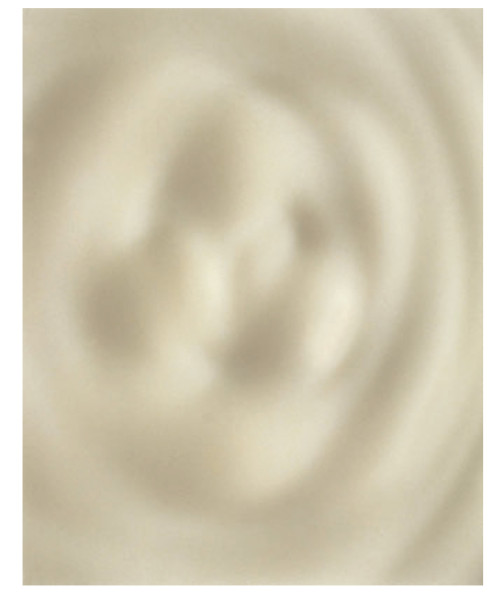Carsten Nicolai: Anti-Reflex, catalogue (2005) [English/German]
Filed under catalogue | Tags: · art, art and science, installation art, sound art, sound recording, technology

“Carsten Nicolai is considered today to be one of the most important representatives of a generation of artists who focus on exploring the points of intersection between art, nature, and science. As a visual artist, researcher, producer, and organizer of concert events combined in one person, Nicolai seeks to overcome the division among the senses in human perception and to make it possible to experience natural phenomena like the frequencies of sound and light or electromagnetic fields with the eyes as well as by hearing and touch. His installations radiate a minimalist aesthetics that captivates the viewer with its elegance, simplicity, and emphasis on technology. Following his participation in important international exhibitions like the Kassel documenta and the Venice Biennial, the Schirn Kunsthalle presented the first major survey, for which the artist produced a series of new works.” (from curator)
With texts by Magnus Haglund and Yuko Hasegawa.
Curated, edited and with foreword by Max Hollein
Publisher Schirn Kunsthalle Frankfurt, with Verlag der Buchhandlung Walther Koenig, Cologne, 2005
ISBN 3883758914, 9783883758916
200 pages
exhibition & publisher
co-publisher
google books
Andrea Gleiniger, Angelika Hilbeck, Jill Scott (eds.): Transdiscourse 1: Mediated Environments (2011)
Filed under book | Tags: · agriculture, architecture, art and science, climate crisis, design, documentary film, eco art, ecology, energy, environment, permaculture, recycling

– Encourages critical reflections that shed light on how combinations of art, architecture, technology and science could directly impact urban societies and their rural alternative
– Discusses the know-how-transfer between the arts and the sciences is facilitated
Mediated Environments addresses the problem that society interprets our environment through conditioned and constructed representations of mainstream media and not in a transdisciplinary way with the help of artists, architects, filmmakers, cultural theorists and scientists. The writers who come from these various backgrounds all wish to give media artists, designers and writers a new role in relation to the pressing issues of urban and rural life: ones that can address the challenges of human psychology, recycling, agricultural production, climate chaos and energy conservation. The main aims were to focus on the potentials of creative work to raise public awareness and to find new discourses that can be shared within the areas of mediated architecture, eco art, experimental documentary film, eco-emergent design and art and science collaborations. The editors believe that a closer transdisciplinary working relationship could encourage a more tangible approach to these problems of the future.
Publisher Springer, 2011
Producer Zurich University of the Arts (ZHdK)
ISBN 3709102871, 9783709102879
216 pages
Cretien van Campen: The Hidden Sense: Synesthesia in Art and Science (2007)
Filed under book | Tags: · art and science, brain, cognition, music, neuropsychology, perception, psychology, science, synaesthesia, visual music

What does it mean to hear music in colors, to taste voices, to see each letter of the alphabet as a different color? These uncommon sensory experiences are examples of synesthesia, when two or more senses cooperate in perception. Once dismissed as imagination or delusion, metaphor or drug-induced hallucination, the experience of synesthesia has now been documented by scans of synesthetes’ brains that show “crosstalk” between areas of the brain that do not normally communicate. In The Hidden Sense, Cretien van Campen explores synesthesia from both artistic and scientific perspectives, looking at accounts of individual experiences, examples of synesthesia in visual art, music, and literature, and recent neurological research.
Van Campen reports that some studies define synesthesia as a brain impairment, a short circuit between two different areas. But synesthetes cannot imagine perceiving in any other way; many claim that synesthesia helps them in daily life. Van Campen investigates just what the function of synesthesia might be and what it might tell us about our own sensory perceptions. He examines the experiences of individual synesthetes—from Patrick, who sees music as images and finds the most beautiful ones spring from the music of Prince, to the schoolgirl Sylvia, who is surprised to learn that not everyone sees the alphabet in colors as she does. And he finds suggestions of synesthesia in the work of Scriabin, Van Gogh, Kandinsky, Nabokov, Poe, and Baudelaire.
What is synesthesia? It is not, van Campen concludes, an audiovisual performance, a literary technique, an artistic trend, or a metaphor. It is, perhaps, our hidden sense—a way to think visually; a key to our own sensitivity.
Publisher MIT Press, 2008
Leonardo Books series
ISBN 0262220814, 9780262220811
185 pages
PDF (updated on 2013-3-19)
Comment (0)
